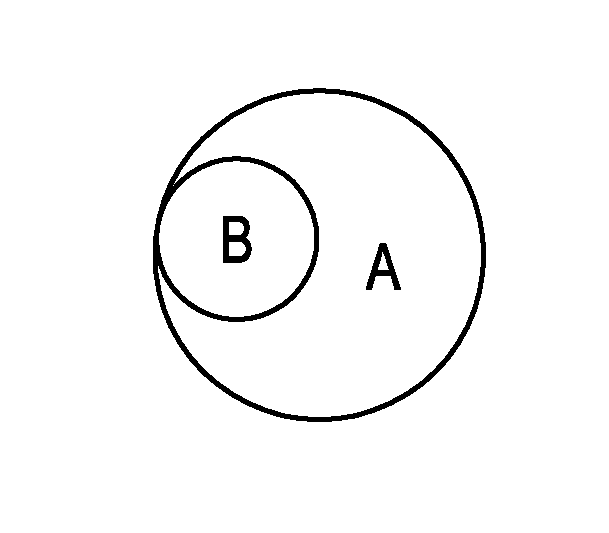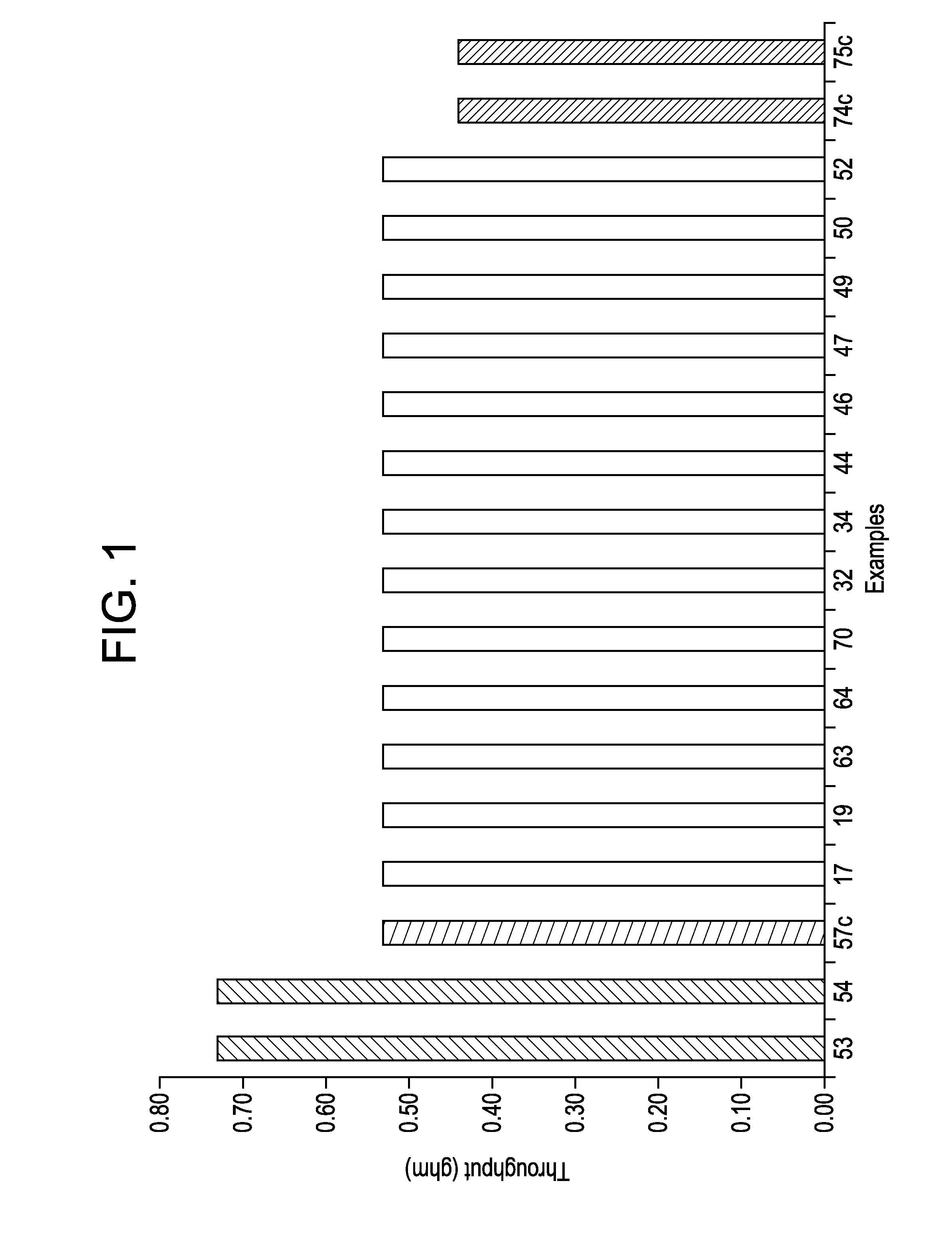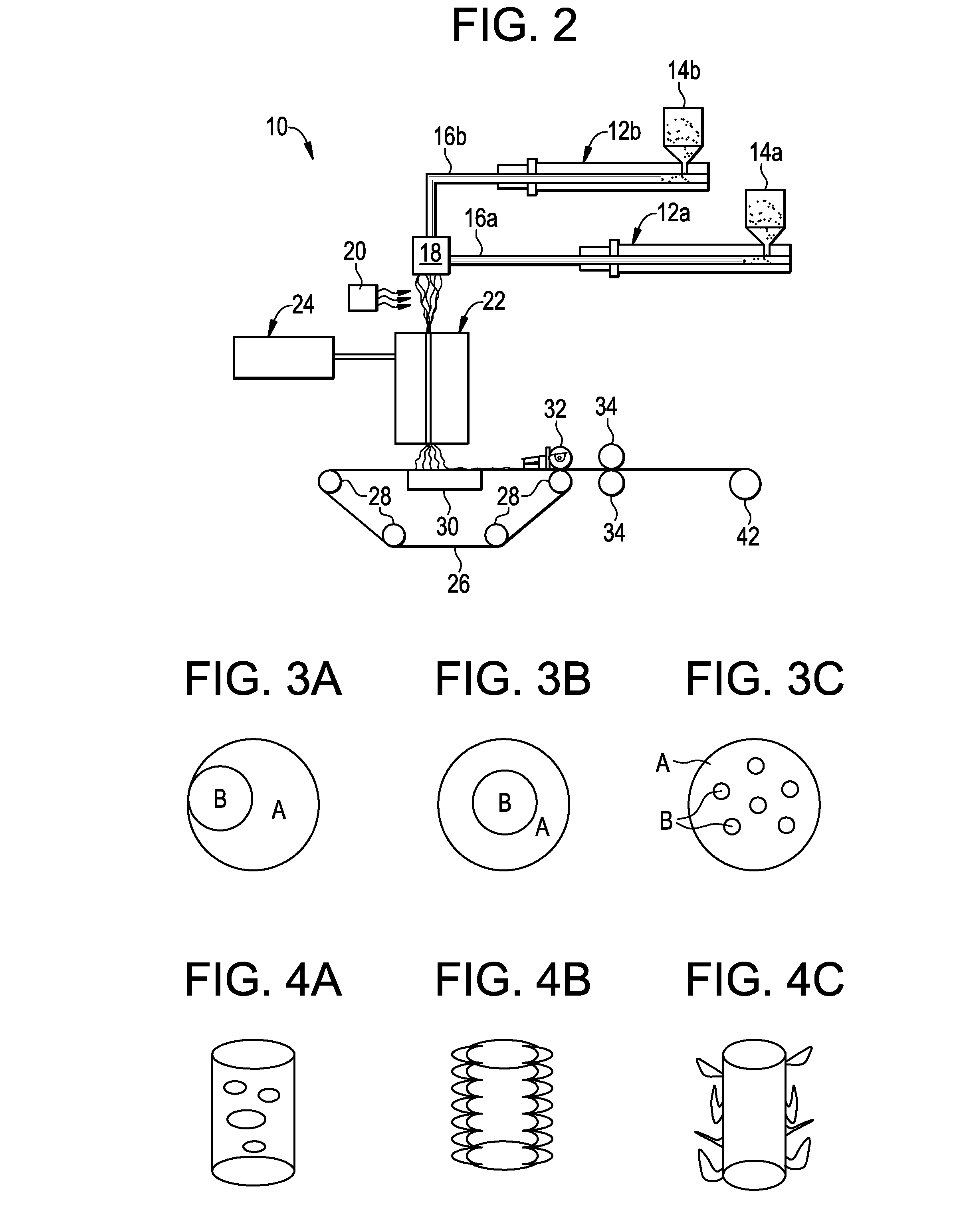FIBERS AND FABRICS MADE FROM ETHYLENE/alpha-OLEFIN INTERPOLYMERS
a technology of alpha-olefin and fibers, applied in the field of fibers made from ethylene/alpha-olefin interpolymers, can solve the problems of substantial rupture and loss of fabric integrity, decrease in peak force, and high cost of spandex for many applications
- Summary
- Abstract
- Description
- Claims
- Application Information
AI Technical Summary
Benefits of technology
Problems solved by technology
Method used
Image
Examples
examples
[0318]Spunbond nonwoven fabrics samples consisting of Example 1 to example 81c in Table IV, Table V and Table VI have been produced utilizing Reicofil 4 spunbond technology from Reicofil. The technology consists of a 1.2 meter wide spunbond line which have 2 separate extruders supplying a bicomponent spin beam configuration via and individual spinpump for each extruder.
[0319]Spunbond nonwoven fabric are produced by melting the polymer via an extruder which maintains a constant pressure of 60 bars onto a meltpump which delivers a meltfront to a spinbeam consisting of polymer melt die for delivering a uniform melt at a constant pressure to distribution plates and the spinnerette. The spinnerette design in this trial consists of 6827 holes / meter with and hole diameter of 0.6 mm and a L / D ratio of 4. Throughput is varied from 0.44 ghm to 0.72 ghm and fiber deniers is varied from 1.6 denier to 2.2 denier.
[0320]The molten polymer is exiting the spinnerette (6827 fibers per meter) and is t...
PUM
| Property | Measurement | Unit |
|---|---|---|
| Temperature | aaaaa | aaaaa |
| Temperature | aaaaa | aaaaa |
| Temperature | aaaaa | aaaaa |
Abstract
Description
Claims
Application Information
 Login to View More
Login to View More - R&D
- Intellectual Property
- Life Sciences
- Materials
- Tech Scout
- Unparalleled Data Quality
- Higher Quality Content
- 60% Fewer Hallucinations
Browse by: Latest US Patents, China's latest patents, Technical Efficacy Thesaurus, Application Domain, Technology Topic, Popular Technical Reports.
© 2025 PatSnap. All rights reserved.Legal|Privacy policy|Modern Slavery Act Transparency Statement|Sitemap|About US| Contact US: help@patsnap.com



